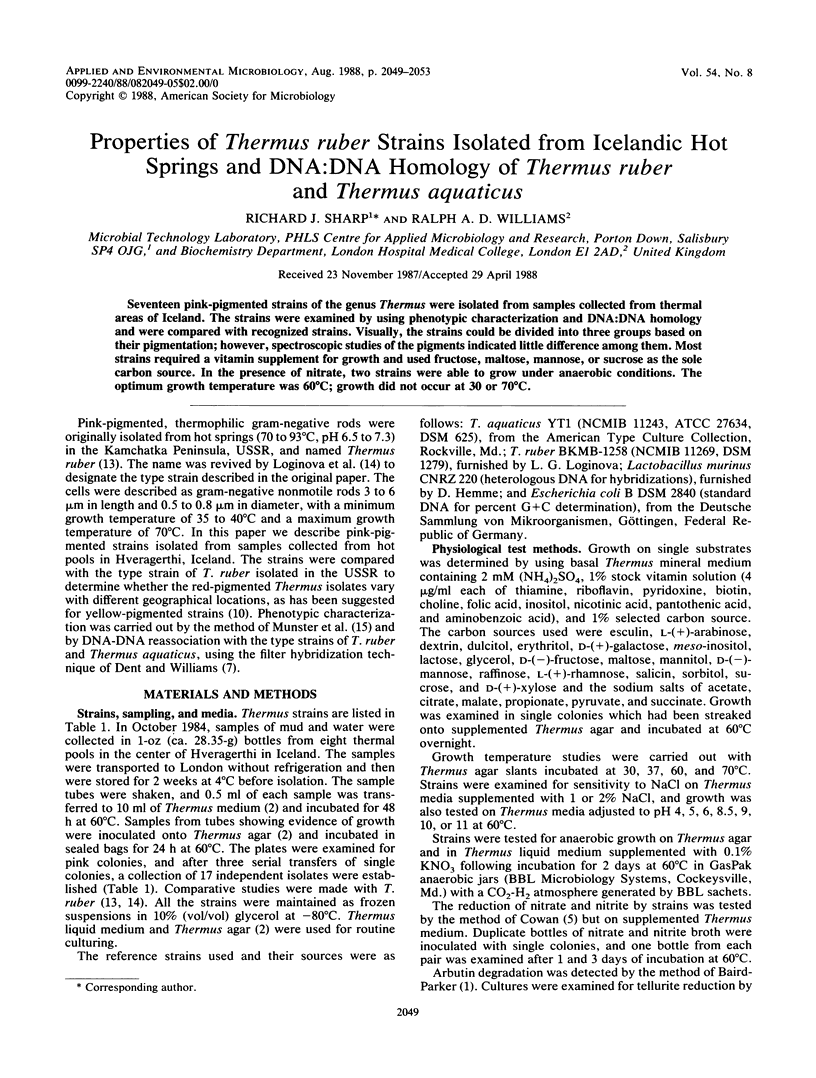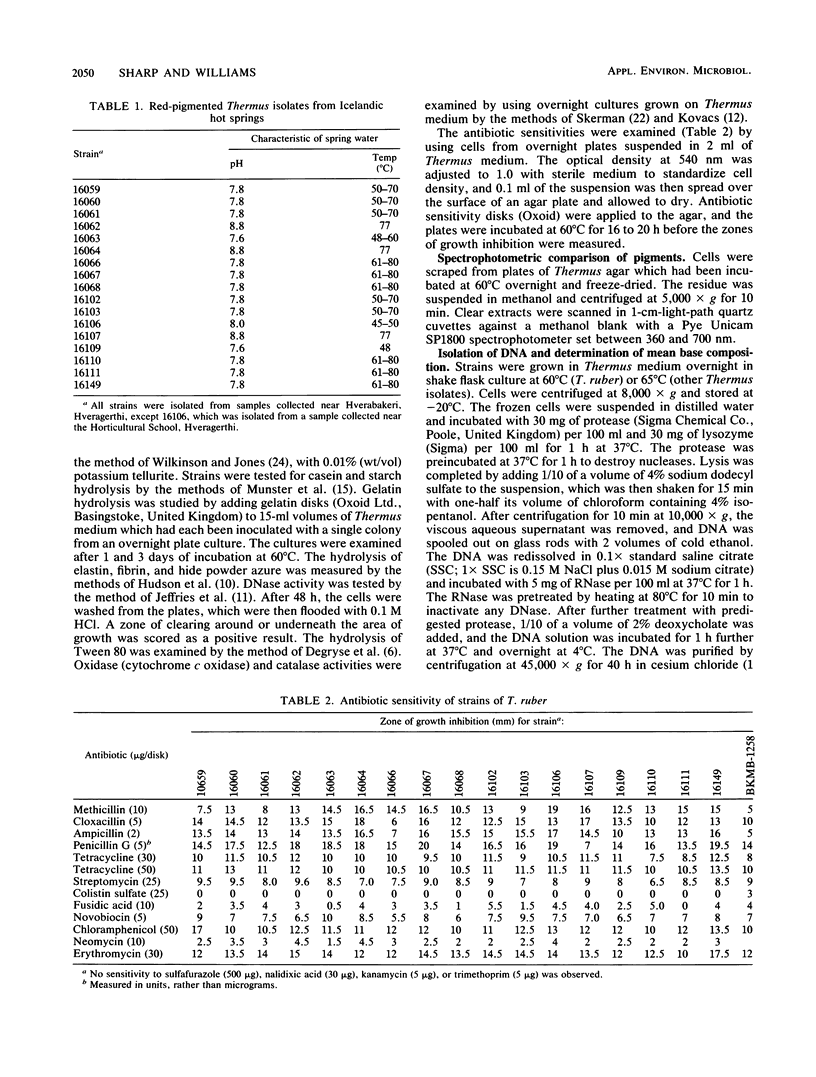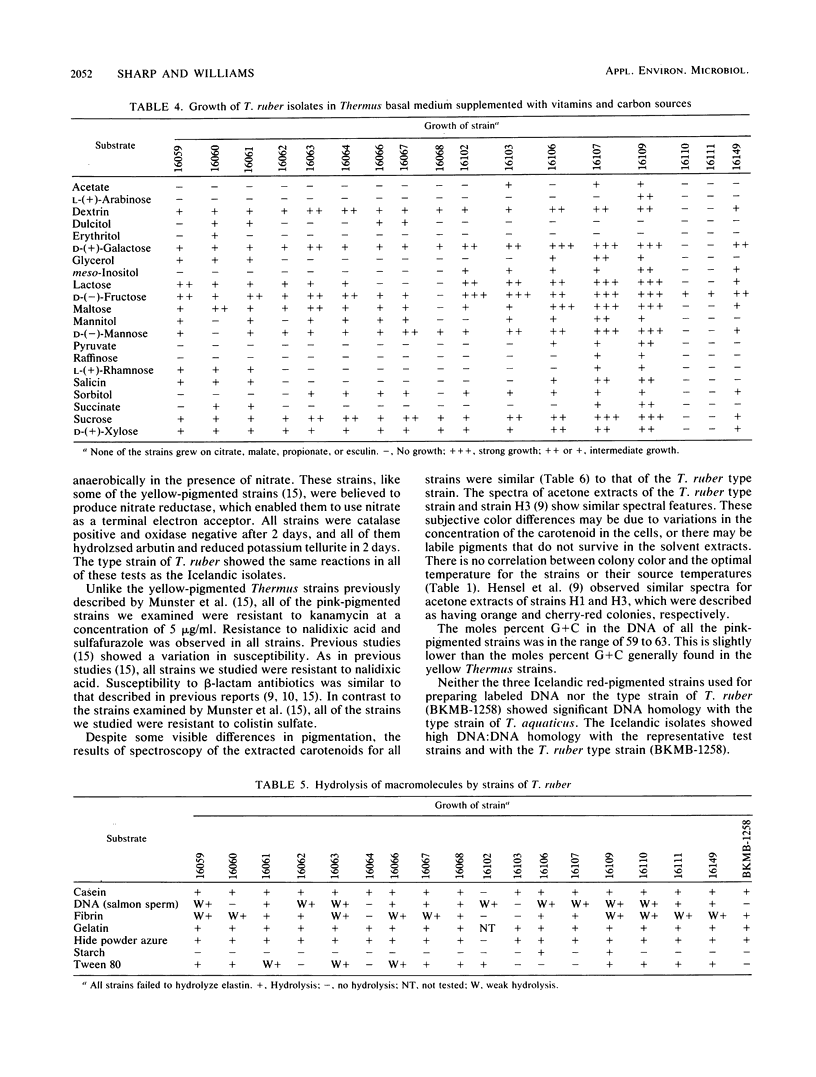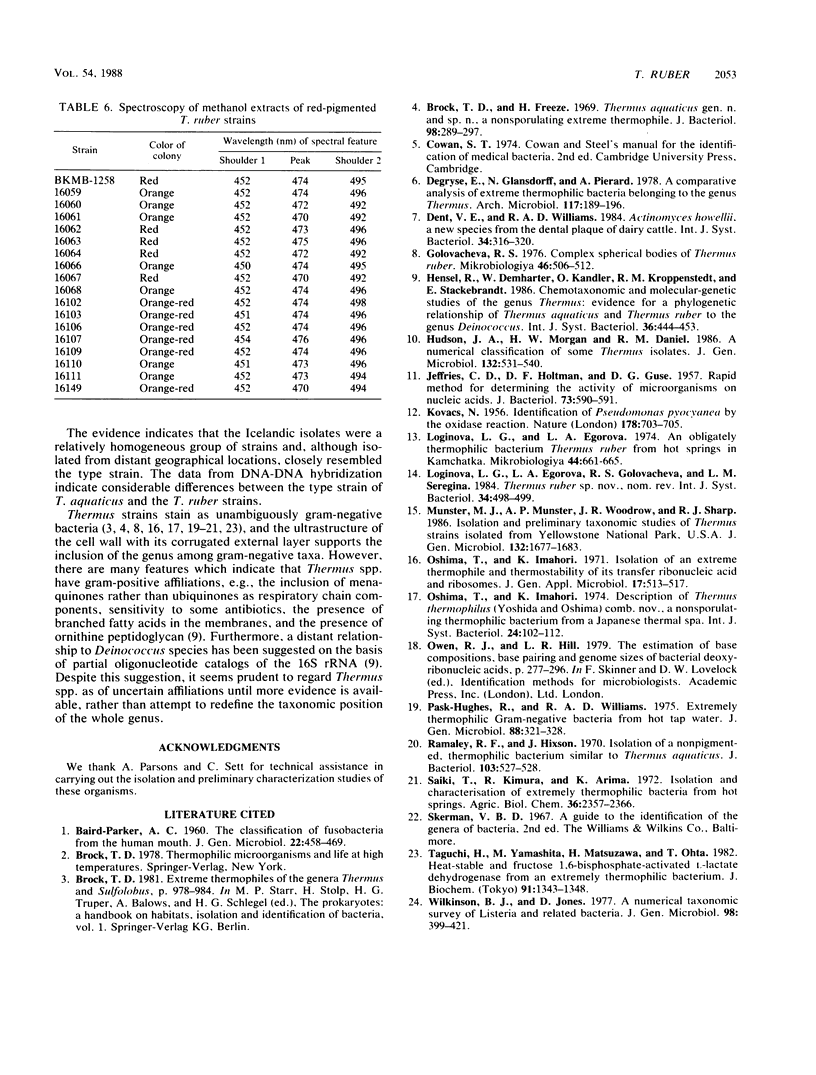Abstract
Seventeen pink-pigmented strains of the genus Thermus were isolated from samples collected from thermal areas of Iceland. The strains were examined by using phenotypic characterization and DNA:DNA homology and were compared with recognized strains. Visually, the strains could be divided into three groups based on their pigmentation; however, spectroscopic studies of the pigments indicated little difference among them. Most strains required a vitamin supplement for growth and used fructose, maltose, mannose, or sucrose as the sole carbon source. In the presence of nitrate, two strains were able to grow under anaerobic conditions. The optimum growth temperature was 60°C; growth did not occur at 30 or 70°C.
Full text
PDF




Selected References
These references are in PubMed. This may not be the complete list of references from this article.
- BAIRD-PARKER A. C. The classification of fusobacteria from the human mouth. J Gen Microbiol. 1960 Apr;22:458–469. doi: 10.1099/00221287-22-2-458. [DOI] [PubMed] [Google Scholar]
- Brock T. D., Freeze H. Thermus aquaticus gen. n. and sp. n., a nonsporulating extreme thermophile. J Bacteriol. 1969 Apr;98(1):289–297. doi: 10.1128/jb.98.1.289-297.1969. [DOI] [PMC free article] [PubMed] [Google Scholar]
- Degryse E., Glansdorff N., Piérard A. A comparative analysis of extreme thermophilic bacteria belonging to the genus Thermus. Arch Microbiol. 1978 May 30;117(2):189–196. doi: 10.1007/BF00402307. [DOI] [PubMed] [Google Scholar]
- Golovacheva R. S. Kompleksnye sfericheskie tela Thermus ruber. Mikrobiologiia. 1977 May-Jun;46(3):506–512. [PubMed] [Google Scholar]
- JEFFRIES C. D., HOLTMAN D. F., GUSE D. G. Rapid method for determining the activity of microorganisms on nucleic acids. J Bacteriol. 1957 Apr;73(4):590–591. doi: 10.1128/jb.73.4.590-591.1957. [DOI] [PMC free article] [PubMed] [Google Scholar]
- KOVACS N. Identification of Pseudomonas pyocyanea by the oxidase reaction. Nature. 1956 Sep 29;178(4535):703–703. doi: 10.1038/178703a0. [DOI] [PubMed] [Google Scholar]
- Loginova L. G., Egorova L. A. Obligatno-termofil'nye bakterii Thermus ruber v gidrotermakh Kamchatki. Mikrobiologiia. 1975 Jul-Aug;44(4):661–665. [PubMed] [Google Scholar]
- Munster M. J., Munster A. P., Woodrow J. R., Sharp R. J. Isolation and preliminary taxonomic studies of Thermus strains isolated from Yellowstone National Park, USA. J Gen Microbiol. 1986 Jun;132(6):1677–1683. doi: 10.1099/00221287-132-6-1677. [DOI] [PubMed] [Google Scholar]
- Pask-Hughes R., Williams R. A. Extremely thermophilic gram-negative bacteria from hot tap water. J Gen Microbiol. 1975 Jun;88(2):321–328. doi: 10.1099/00221287-88-2-321. [DOI] [PubMed] [Google Scholar]
- Ramaley R. F., Hixson J. Isolation of a nonpigmented, thermophilic bacterium similar to Thermophilic bacterium similar to Thermus aquaticus. J Bacteriol. 1970 Aug;103(2):527–528. doi: 10.1128/jb.103.2.527-528.1970. [DOI] [PMC free article] [PubMed] [Google Scholar]
- Taguchi H., Yamashita M., Matsuzawa H., Ohta T. Heat-stable and fructose 1,6-bisphosphate-activated L-lactate dehydrogenase from an extremely thermophilic bacterium. J Biochem. 1982 Apr;91(4):1343–1348. doi: 10.1093/oxfordjournals.jbchem.a133821. [DOI] [PubMed] [Google Scholar]
- Wilkinson B. J., Jones D. A numerical taxonomic survey of Listeria and related bacteria. J Gen Microbiol. 1977 Feb;98(2):399–421. doi: 10.1099/00221287-98-2-399. [DOI] [PubMed] [Google Scholar]


